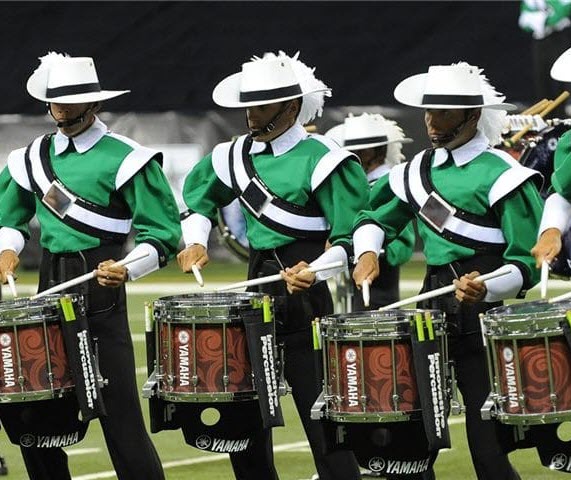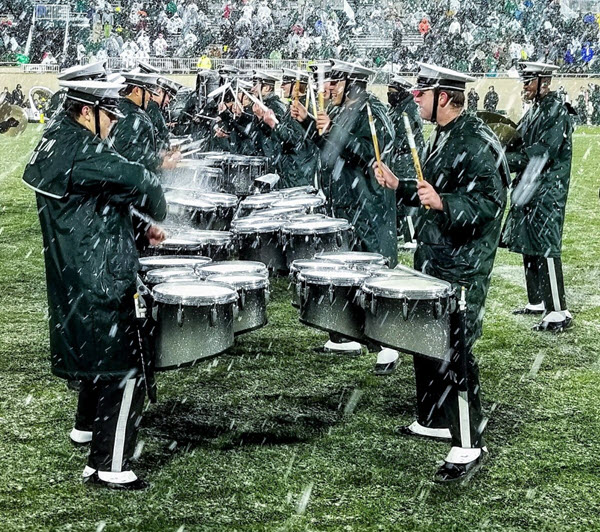Tuning Tips for Marching Percussion
Find the right pitch for your marching drum and keep it there.
Marching percussion is one of the most demanding categories of instruments in terms of equipment wear and tear. Because they are primarily used outdoors, well-tuned drums are necessary to allow the maximum projection of sound. In addition, a conscientious schedule of regular maintenance and tuning will extend the life of each instrument. The pitches recommended in this article serve as a reference for achieving superior projection and tone quality.
Find the right pitch for your drum and keep it there. Don’t get into the habit of tightening the drumhead every time you play it, and remember: It needs to be tuned, not necessarily tightened. Even though new heads require a short break-in period, modern materials are extremely resilient and tend to hold pitch longer if they are always returned to the desired pitch at every session. Stay consistent and check the drum pitch often, especially when the head is new. Far better to check the head daily and make small adjustments than to wait a week and make a large adjustment in tensioning.
Finally, change heads when the tone has gone “dead,” not just when you break them!
Maintenance Tips
- Keep tension rods lubricated with lithium grease, petroleum jelly or a premium valve oil. Carefully remove exposed lubricant, as it can attract dirt and damage threads. Replace worn or lost nylon and metal washers.
- Lubricating wood bearing edges with a thin coat of paraffin or cork grease will ease high-tension tuning and help prevent moisture from seeping into the shell.
- Pre-tighten each tension rod with your fingers only. With a drum key, use a crisscross tuning sequence for plastic heads and a clockwise procedure for Kevlar® heads to properly seat the head. Tighten each rod, no more than one full turn at a time, until the drum is brought into its proper range.
- Fine tune the head to the same pitch in front of each tension rod.
- Change heads at the end of practice and let them sit overnight before you play on them again.
- Practice with well-tuned drums. Don’t wait until a performance to tune.
- Cover all your drums during rehearsals with marching drum covers to prevent scratches that can occur when learning your drill movements.
- Cases must be used when transporting or storing your drums. Don’t keep sticks, music folders, carriers or other objects in the case. They can cause damage to the heads and shell!
Marching Snares
A Kevlar or a plastic, dotted batter (top) head is recommended, along with a plastic bottom head. Make sure to check often for loose tension rods especially on the bottom side; gravity guards can be used to prevent neglected tension rods from falling out. Tune each individual snare strand to a uniform pitch using a “plucked string” method:
- Adjust the individual strands at the butt place with a screwdriver.
- Turn clockwise to tighten and counter clockwise to loosen individual strands.
- Use the vertical control knobs to get the snares flush with the bottom head at the bearing edge.
- Then, while playing the batter head, use the horizontal control knob to gradually tighten the entire snare unit to a crisp articulation.
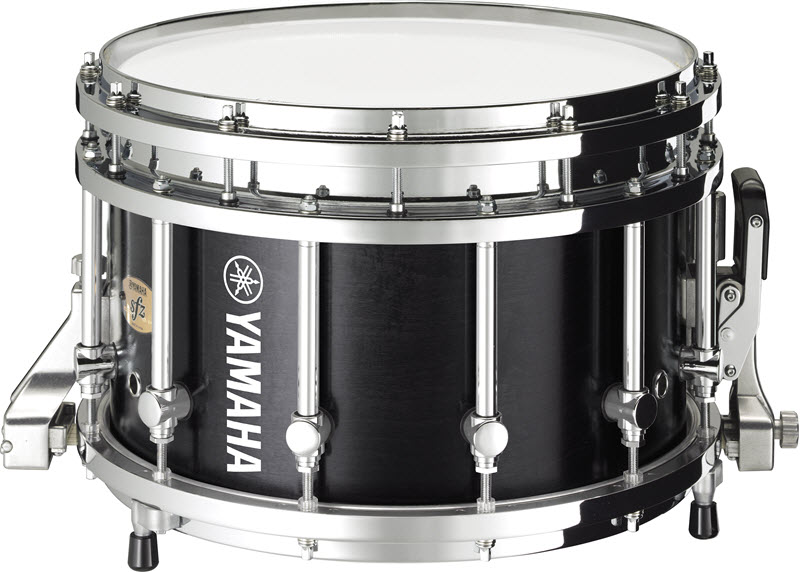
Marching Toms
Pinstripe heads without dots are recommended. Marching toms in a set are usually tuned a minor third apart to give a feeling of melodic movement between drums. These instruments tend to attract more dirt since they have no bottom heads, so keep marching tom guards on the bottom edges of all drums to protect them.
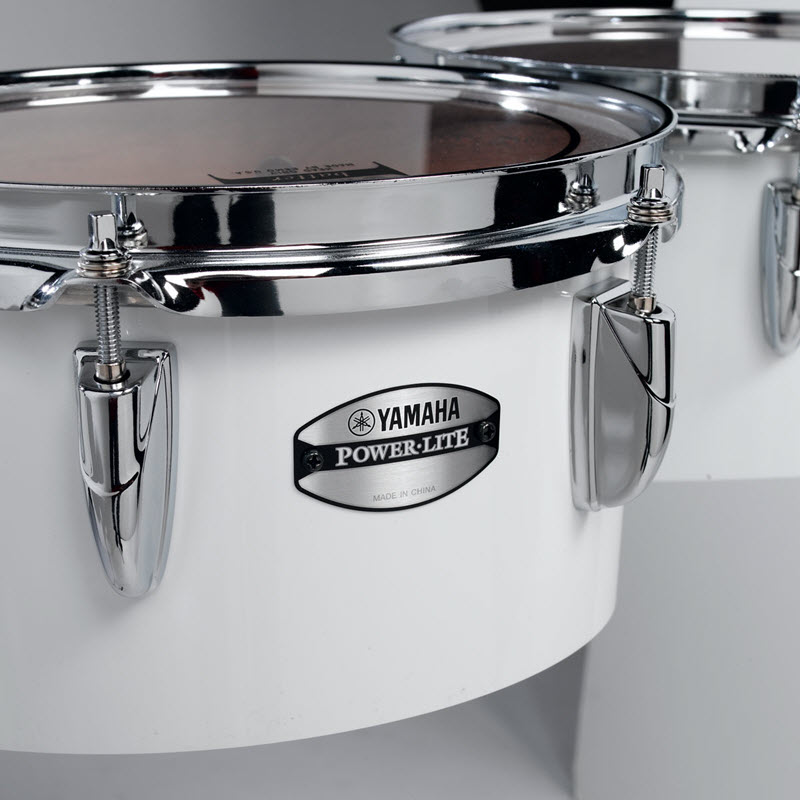
Marching Bass Drums
Smooth white heads are recommended for bass drums, as they produce the most desirable fundamental tone and are visually effective in drill patterns. Bass drums in a set are usually tuned a minor third to a perfect fifth apart to give a feeling of melodic movement between drums. If you need to eliminate unwanted overtones and ring, apply a length of Yamaha Sound Impact Strips™ around the perimeter of the bass drum head.
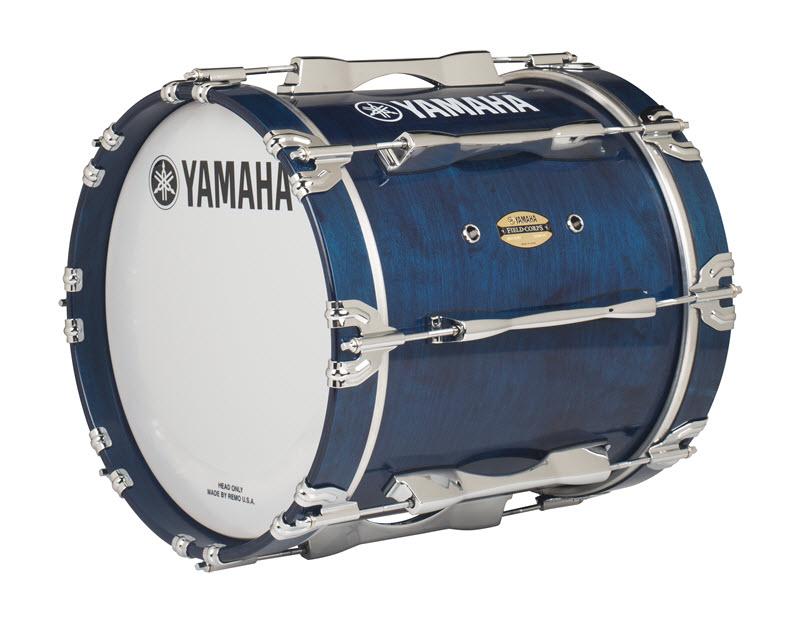
There are limitless combinations of pitches and tuning variations for marching drums, with endless ways to muffle and dampen them. All depend on the style of the ensemble and personal preference, but carefully planned tuning and dampening are critical to the development of your percussion section and can help increase the musical effectiveness of the entire marching ensemble.
Click here for more information about Yamaha marching drums.
Click here for more information about Yamaha marching drum accessories.











